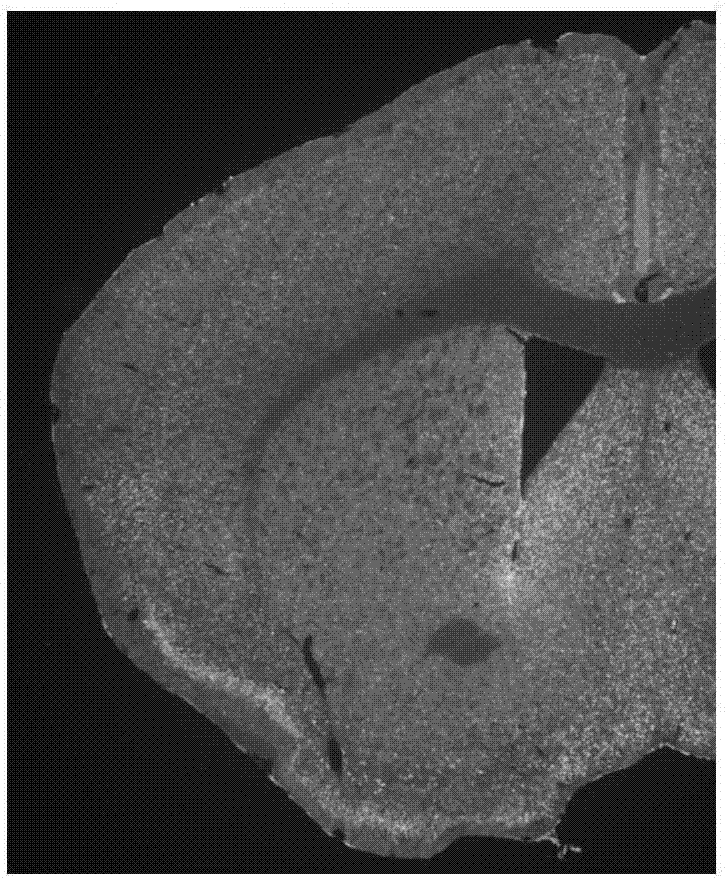Mouse Shank 3 gene cRNA probe and in-situ hybridization color development method
An in situ hybridization, mouse technology, applied in the field of biomedicine, can solve the problems that the color development effect needs to be improved, the composition is complex, the cRNA probe and the fluorescent in situ hybridization color development method has not been reported, and the processing time can be optimized. , long storage time, economical and convenient effect
- Summary
- Abstract
- Description
- Claims
- Application Information
AI Technical Summary
Problems solved by technology
Method used
Image
Examples
Embodiment Construction
[0029] The present invention will be described in further detail below in conjunction with the accompanying drawings and embodiments. The examples are used to explain the present invention, not to limit the present invention.
[0030] The invention constructs the cRNA probe of the mouse Shank3 gene, and clearly shows the expression of the mouse Shank3 gene in normal mouse brain tissue by means of fluorescence in situ hybridization, providing an experimental basis for further double labeling.
[0031] 1. Shank 3 gene cRNA probe preparation
[0032] 1. According to the reference sequence (NM_021423.3) of the mouse Shank 3 gene mRNA in the Gene bank, blastn was used to select relatively specific fragments, and in combination with the fluorescence in situ hybridization method proposed by the present invention, the Shank3 cRNA was finally determined. Specific fragments (nucleotides 3465-4108; GenBank accession No. NM_021423.3).
[0033] 2. Using the primer-blast tool for this fra...
PUM
 Login to View More
Login to View More Abstract
Description
Claims
Application Information
 Login to View More
Login to View More - R&D
- Intellectual Property
- Life Sciences
- Materials
- Tech Scout
- Unparalleled Data Quality
- Higher Quality Content
- 60% Fewer Hallucinations
Browse by: Latest US Patents, China's latest patents, Technical Efficacy Thesaurus, Application Domain, Technology Topic, Popular Technical Reports.
© 2025 PatSnap. All rights reserved.Legal|Privacy policy|Modern Slavery Act Transparency Statement|Sitemap|About US| Contact US: help@patsnap.com



